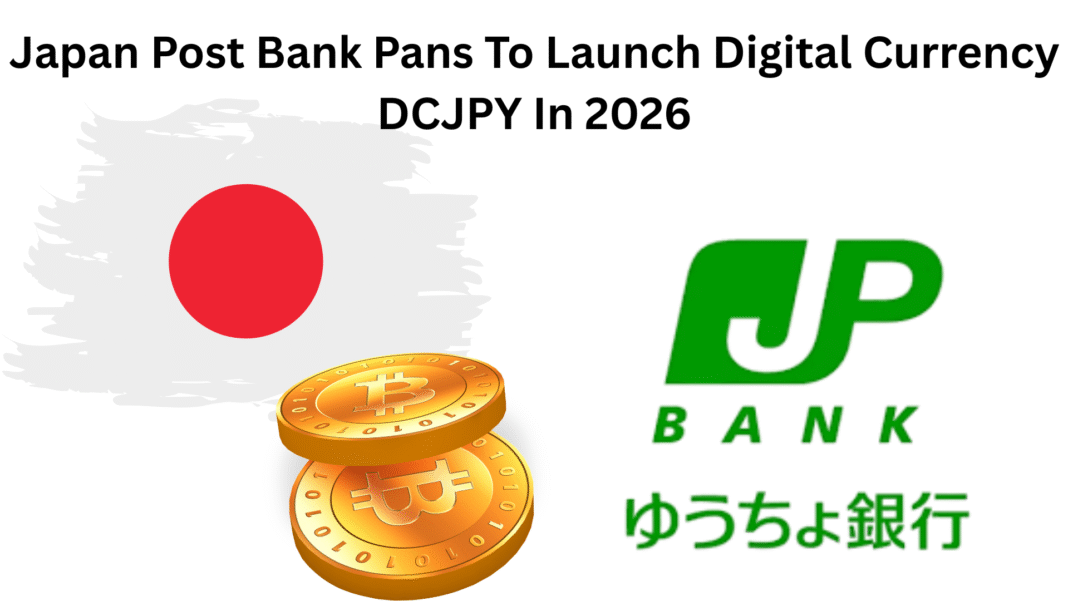During the fiscal year of 2026, Japan Post Bank is slated to launch digital currency DCJPY for the entire nation of Japan.
The purpose of the initiative is to integrate tokenised bank deposits into the nation’s banking system and to offer customers blockchain-enabled tokenised deposit settlement services.
How Does It Work?
Users will be able to convert their bank deposits into corresponding digital tokens at the described 1-to-1 ratio. DCJPY will be denominated as a digital token and will be issued on a yen-backed basis.
Users will be able to utilise a private blockchain system, which provides users with ultra-compliant, swift, and secure payment solutions.
Each unit of DCJPY will represent a tokenised deposit which is equal to the bank’s actual yen deposits at Japan Post Bank. Users will retain the option to convert from physical deposits to the easier digital form at zero loss of value.
This distinguishes DCJPY from privately issued stablecoins, which tend to be volatile and pose risks of sudden fluctuations in value.
The system will run on a private blockchain built by DeCurret DCP, a subsidiary of Internet Initiative Japan. Since the blockchain has been given a green light, only approved participants will be able to validate any transactions.
Impact on payments and capital markets
Japan Post Bank claims that DCJPY might be of value to both casual and professional users of the currency. For casual users, the digital currency would allow for instant transfers between accounts.
For professional users, DCJPY may simplify the settlement of digital securities and enhance the speed at which the markets operate. Analysts note that there are also NFTs, tokenised bonds, and other new realms that might have value.
Also Read: Japan’s Minna Bank Partners with Fireblocks & Solana Japan to Launch Stablecoin Pilot
Beyond payments, the new system may also be applied to public services. Officials can surely use the network to send subsidies, tax refunds, or disaster relief funds directly into digital wallets. This would stop any delays and reduce the risks of funds being misused in any way.
A bank with national reach
Japan Post Bank is one of the country’s biggest financial institutions, managing about ¥190 trillion, or $1.3 trillion, across 120 million accounts. Its scale gives the DCJPY project a wide base from the start.
Because of the bank’s reach, the new digital currency could accelerate adoption across Japan and push other major banks to look at similar initiatives.
Balancing innovation and regulation
Japan has often taken a cautious stance toward digital assets, and regulators remain concerned about the risks of unbacked cryptocurrencies and private stablecoins that fall outside official oversight.
By designing DCJPY as a deposit-backed token within the banking system, Japan Post Bank ensures that the product meets compliance requirements and avoids volatility.
The project also aligns with broader government efforts. The Bank of Japan is currently testing central bank digital currency models. Observers believe DCJPY could help provide insights that shape those national strategies.
Japan Post Bank has said that the system will undergo resilience and scalability tests before it is released. Public acceptance will also be a focus, since success depends on how willing users are to adopt the digital option. The fiscal 2026 launch date gives the bank time to refine the product and build trust.
Context of Japan’s first stablecoin approval
Unocrypto reported that the Financial Services Agency is preparing to authorise the country’s first yen-backed stablecoin later this year. That step would allow fintech firm JPYC to release a digital token tied to the yen.
The introduction of DCJPY alongside this new stablecoin shows that Japan is moving forward with multiple models of digital money, each under tight regulation.
Also Read: Ripple and SBI Group Plans To Bring RLUSD Stablecoin To Japan


